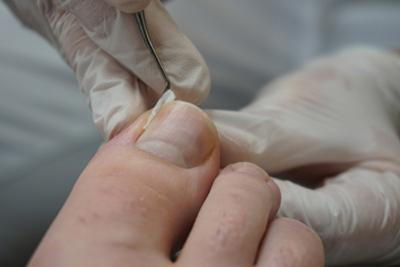
Ingrown toenails can cause pain and difficulty walking when they are allowed to go untreated and become infected. If you are suffering from ingrown toenails in Cedar Rapids, IA, you can get the help you need from Dr. Peter Caldwell, a podiatrist at Iowa Foot & Ankle Clinic.
What are ingrown toenails?
An ingrown toenail occurs when the corner or the side of the toenail grows into the flesh of the toe. An ingrown toenail can happen on one side of the toe or both sides. When it digs into the skin it can cause redness, swelling, and infection. Most often, it happens on the big toe.
Causes of ingrown toenails
One common cause of ingrown toenails is heredity. Your genetics determine the shape of your toenails and there are types of shapes that are more predisposed to growing outside the nail bed than others. If you have toenails that are curled rather than lying flat, you are at greater risk for recurring ingrown toenails. Other causes of ingrown toenails include trauma to the toes such as stubbing or dropping something heavy on them, ill-fitting shoes, or repeated activity like kicking a ball or running. Those who suffer from diabetes are more prone to getting ingrown toenails than most other people.
Preventing ingrown toenails
Trimming your toenails too short can result in ingrown toenails. The best way to trim your toenails is straight across and not too short. Before cutting your toenails, soak your foot to soften the nail. Make sure you always clean your nail trimmer. The shoes that you wear should be well-fitting and leave enough room for your toes to stretch.
Treating ingrown toenails
If your toenail is not infected, you will be able to soak your foot in warm water and Epsom salt. When the nail has softened, you can lift it up and away from the flesh so that it isn't digging in. NSAIDs can help to relieve pain. If home remedies don't work, then there are several things that your Cedar Rapids podiatrist can do. The nail can be removed fully or partially. Dr. Caldwell may decide to do an ablation which will keep the nail from becoming ingrown again. If you have an infection, antibiotics will likely be administered.
Ingrown toenails are a common condition and one that you don't need to suffer silently with. For help with your ingrown toenails in Cedar Rapids, IA, you can count on Dr. Peter Caldwell of Iowa Foot & Ankle Clinic to provide the treatment that you need. Give the office a call at 319-363-3543 to make an appointment.
